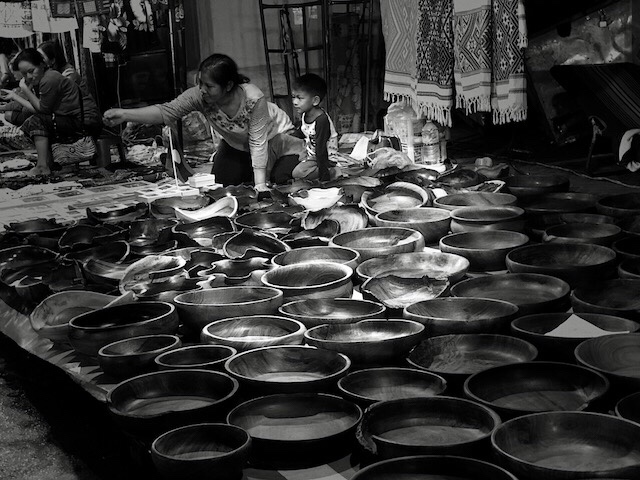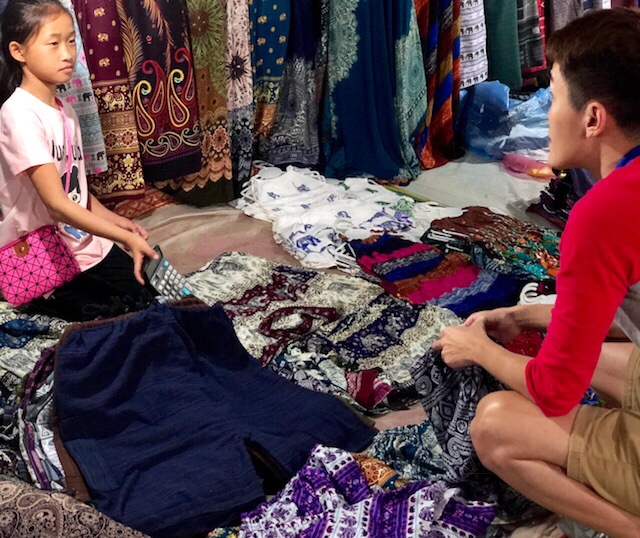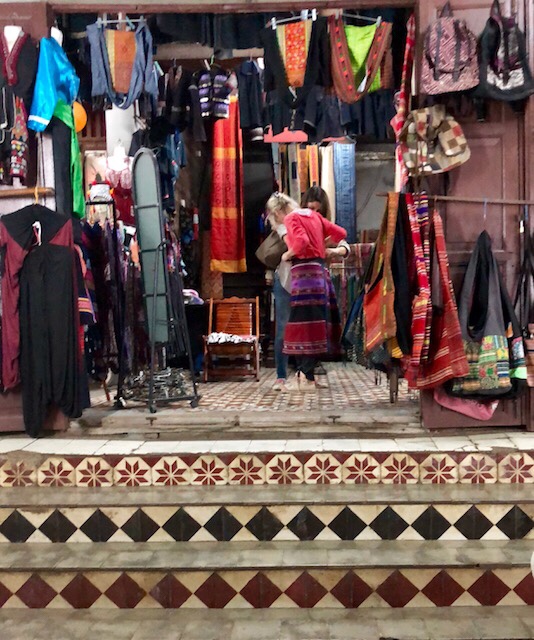January 27. Forgot to give you this information about Laos. If you’re not interested, scroll down to the first photo below.
Laos was one of two “dominoes” that fell after the Vietnam War. Cambodia, where we will be going next is the second.
The domino theory was a Cold War policy that suggested a communist government in one nation would quickly lead to communist takeovers in neighboring states, each falling like a perfectly aligned row of dominos. In Southeast Asia, the U.S. government used the now-discredited domino theory to justify its involvement in the Vietnam War and its support for a non-communist dictator in South Vietnam. In fact, the American failure to prevent a communist victory in Vietnam had much less of an impact than had been assumed by proponents of the domino theory. With the exception of Laos and Cambodia, communism failed to spread throughout Southeast Asia.
The human history of Laos stretches back more than 10,000 years as stone tools and skulls unearthed in Huaphan and Luang Prabang provinces can confirm. The famous giant jars in Xieng Khouang province and stone columns in Huaphan province date from the neolithic period. Over centuries, rural settlements grew slowly to ‘muang’ (townships) along the Mekong River.
The charismatic King Fa Ngoum (1349-1357) began grouping the muang into a unified Lan Xang Kingdom, basing the capital at Xiengdong Xiengthong, now known as Luang Prabang. Fa Ngoum was also a warrior, and between 1353 and 1371 he invaded and conquered territories that include all of present-day Laos and much of what makes up northern and eastern Thailand. Under his fierce and dynamic rule, construction, development and national defense were organized.
The capital was moved to Vientiane in 1560 during the reign of King Setthathirath, who erected the That Luang Stupa, a venerated religious shrine which is a well known symbol of the Laos nation. The warring Burmese occupied the capital for seven years from 1575, reflecting their dominance over Southeast Asia at that time.
In 1591 the two Laotian kingdoms in Luang Prabang and Vieng Chan were reunited under King Nokeo Koumane. In the 17th century, under the region of King Souliyavongsa, the Kingdom entered its ‘golden age’ and gained increasing attention from Europe. Reports written by Dutch merchants from the East Indian Company describe a land of magnificent palaces, temples, and awe-inspiring religious ceremonies. Vientiene was then considered to be one of the most beautiful cities in Southeast Asia.
At the end of the reign of King Souliyavongsa, feudal lords challenged the throne, which in 1713, led to the division of the country into three Kingdoms: Luang Prabang, Vientiane, and Champassack. This rift and disunity created excellent opportunities for invasion, in particular, from Siam. By the end of the 18th century, most of Laos was under Siamese (Thai) domination, leading to a costly war with Siam in the 1820s that ended in all three Kingdoms being ceded to the Thais.
However, with the expansion of French Indochina in the late 19th century, the Thais eventually relinquished Laos to the French and in 1893, Laos became a French colony. The French organized this territory as a protectorate, with its administrative center at Vientiane, and granted it autonomy in local matters.
The catalyst for change was the WW2 Japanese occupation of Indochina, when a Lao resistance group named Lai Issara was formed to prevent the return of the French. Independence was granted in 1953, but internal feuding between nationalist and communist factions was to continue for several years.
When the USA bombed North Vietnamese troops on the Ho Chi Minh Trail in eastern Laos in 1964, it fomented the conflict between the royalist Vientiane government and the communist Pathet Lao who supported the North Vietnamese. A coalition government was formed, but with the fall of Saigon in 1975, most of the royalists fled to France. The Pathet Lao took control of the country and the Laos People’s Democratic Republic was established in December 1975.
Throughout the 1980s Laos maintained friendly relations with the Vietnamese Communists. Since 1989, there has been a move towards a market economy, and a general relaxation of restrictions, including the emergence of a fledgling tourism industry. In a landmark event, Laos joined hands with its neighbors and became a member of Asean in July 1997.
The country has remained overwhelmingly rural, with the bulk of the population living in villages ranging from just a few to several hundred households. Laos has the lowest population density of any country of Southeast Asia, and its population is also one of the most youthful. A high birth rate is offset by a high rate of infant mortality, as well as by a life expectancy that is significantly below the world average.
There has been a considerable out-migration of people from Laos since the mid-1970s, including not only survivors of the Hmong “secret army” from the Vietnam War (1954–75) but also many of the country’s educated and professional elite. Large communities of Lao and Hmong now live in the United States, Australia, and France.
Laos has considerable mineral reserves. Tin has been mined commercially since colonial times and has remained a major resource; gypsum has become important since the last decades of the 20th century. Gold mining expanded significantly in the early 21st century, with substantial foreign investment. Foreign companies have also worked the country’s granite and limestone deposits.
Laos’s chief exports are garments, electric power, timber and other forest products, coffee, and various metals and minerals. Major imports include foodstuffs, construction and electrical equipment, materials for the garment industry, machinery, and mineral fuels. The country’s main trading partners are Thailand, China, and Vietnam. To a lesser extent, Laos engages in trade with Japan, South Korea, and India. Imports have consistently exceeded exports in value, leaving a significant trade deficit; the gap typically has been filled by foreign aid.
This morning we wake up early to photograph the daily early morning ritual of saffron-clad monks with their black Alms-giving bowls being given offerings from the local people, including the ubiquitous sticky rice. Unfortunately, it’s raining so conditions for Photography are very bad and the results reflect that.
We return to our hotel and after breakfast, we enjoy a short-guided walking tour visiting the city’s oldest and most beautiful temples. 
 We walked through a small market behind one of the temples.
We walked through a small market behind one of the temples.


Today we also visited a local Hmong Village. 



We drove on to the spectacular Khouangsi Waterfall and walked up to the top of the falls. 


We return to Luang Prabang and after another great dinner at the Blue Lagoon, we explore the street night market.







Great photos, Dadz!
Ditto!
Looks like you’re hitting your stride. Good to see! Lovely sights!
And good to know that the digital world has captivated village
children!
LOVE the markets! Such great chatchkees to purchase!
Keep on enjoying your visit!
Love,
Your little sister
I really like the umbrella seller picture. Glad you were able to hike up the waterfall. The pictures are now the right size – did you change the aspect ratio from 3:2 to 16:9 or something else? Survive the rest of the trip!
Great pictures. Wonderful portraits. Marvelous fabrics. Thanks!
I love the photos–especially the colorful market ones!
I hope your having a great time,
PR